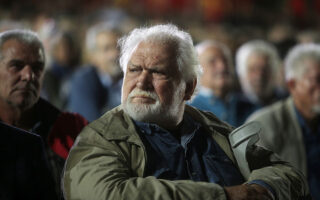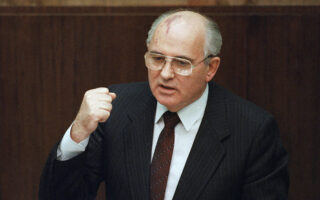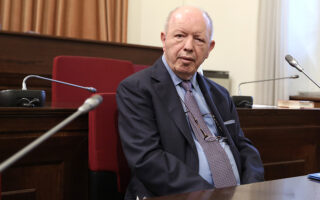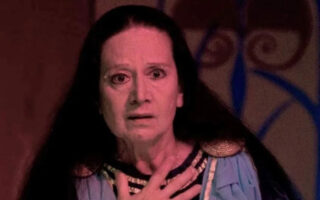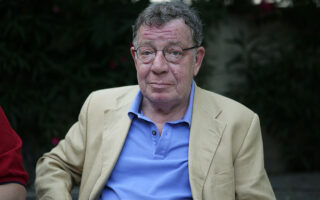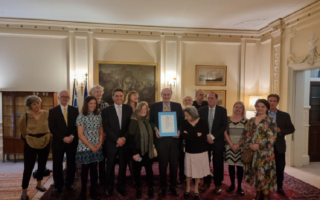Daniel Smith, 90, dies; Thought to be the last child of an enslaved person
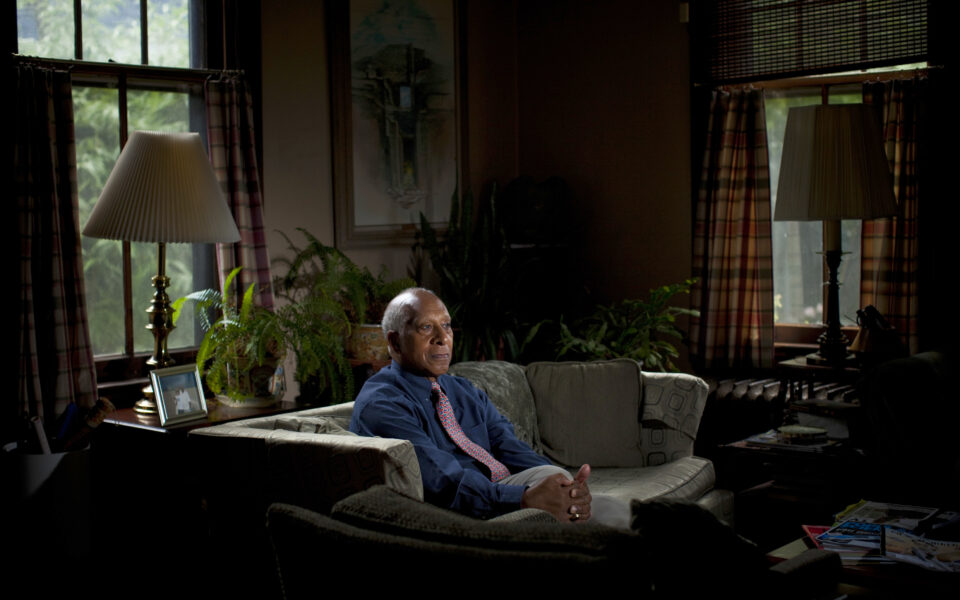
Daniel Smith, who was believed to be the last surviving child of an enslaved person, and who over a long and eventful life witnessed firsthand many of the central moments of the African American experience, died Oct. 19 in Washington. He was 90.
His wife, Loretta Neumann, said the cause was congestive heart failure and bladder cancer.
Smith’s father, Abram Smith, was born into slavery during the Civil War in Virginia, and was 70 when his much younger wife, Clara, gave birth to Daniel in 1932. While it is impossible to know for certain whether Daniel Smith was the last living child of an enslaved person, historians who have studied his generation say they do not know of any others.
Smith, a retired federal employee, liked to say that he led a quiet, unexciting life. Yet he also joked that he was a bit like a “Black Forrest Gump”: He attended the March on Washington in 1963; crossed the Edmund Pettus Bridge in Selma, Alabama, with the Rev. Dr. Martin Luther King Jr. in 1965; and stood in the audience to watch Barack Obama take his first oath of office as president in 2009.
His father also linked him to some of the darkest times in American history.
“I remember hearing about two slaves who were chained together at the wrist and tried to run away,” Smith told The Economist in 2021, recounting his father’s stories. “They were found by some vicious dogs hiding under a tree, and hanged from it.”
Daniel Smith encountered vicious racism as well. When he was working at a YMCA camp in Connecticut in the mid-1950s, he saw a white woman being pulled from a flooded quarry, unconscious but alive. He began to apply CPR, but a white police officer ordered him to stop. While Smith stared back, incredulously, the woman died.
“That’s racism at the height of it,” he told Martin Dobrow, a professor at Springfield College, Smith’s alma mater, for an article in 2020. “He let the girl die, rather than have a Black man touch her lips. I’ll never forget that.”
But his father also instilled in him ambition and a keen sense of self-worth. Though they grew up poor, he and several of his siblings went to college and into middle-class jobs.
“He represents the survival aspect of slavery,” historian Sana Butler, the author of “Sugar of the Crop: My Journey to Find the Children of Slaves” (2009), said in a phone interview. “Ninety percent of the people I interviewed, their parents told them to be their best.”
He dreamed of being a veterinarian. He began graduate studies at the historically Black Tuskegee Institute in Alabama before becoming engulfed in the civil rights movement.
When he left for Alabama, a friend of his mother’s offered him a pistol for protection. He declined.
He lived in Alabama for four years, helping to run an adult literacy program and then directing an antipoverty initiative in rural, impoverished Lowndes County.
Arsonists set fire to the church where he had an office. One night, as he was driving home along a dark stretch of road, a car full of white men raced up behind him, knocking his bumper. The men yelled racial epithets at him and tried to force him into a ditch.
“If they’d have caught me, I’d have been dead,” Smith told The New York Times in 2013.
But he also experienced brighter moments. A friend persuaded him to drive from Connecticut for the historic March on Washington in 1963. They got lost entering the city amid tens of thousands of other cars.
“Suddenly, a policeman on a motorcycle pulled us over,” he told The Times. “We told ourselves to stay calm.”
Instead of harassing them, as they had expected, the police officer asked whether they had a place to stay. When they said no, he escorted them to the house of a white family, where they rested in sleeping bags alongside 20 other marchers.
“I felt that this was the beginning of a new era for Black Americans, that whites would respect Blacks more,” Smith said. “From then on, I thought, America is America, it has become what the Constitution stands for.”
He remained optimistic despite everything else he saw in the 1960s – he moved to Washington in 1968, just weeks before the assassination of King set off days of violent protest in the city – and he felt his idealism rewarded as he watched the first Black president be sworn into office.
Yet just four years later, around the 50th anniversary of the March on Washington, his attitude had soured. Obama’s administration had set off a political backlash shaped by anti-Black racism amid a steady rollback of voting rights and school desegregation laws.
“It’s like you run a race and you hit a wall and you have to work with yourself to get past the wall,” he told The Times. “That’s what happened to America. We made great progress and then we hit a wall and the wall started to push back, and America just has not pushed through that wall yet.”
Daniel Robert Smith was born March 11, 1932, in Winsted, Connecticut, a small town west of Hartford. His father had been born into slavery in Massies Mill, a small community southwest of Charlottesville, Virginia. Like many enslaved people, he never knew his precise birthday, but he believed it was sometime in 1862 or 1863.
After the end of the war brought emancipation to Virginia, Abram Smith continued to work in Massies Mill for a few years. He then migrated north, first to Philadelphia and then to Poughkeepsie, New York, before settling in Winsted, where he found work as a janitor at the Gilbert Clock Company, the largest employer in town.
In Winsted he met the woman who would become his second wife, Clara Wheeler, who was nearly 40 years his junior. Abram was struck and killed by a car when Daniel was 6, after which his mother took a series of jobs as a domestic worker.
Daniel worked, too, putting in long hours before and after school as a veterinarian’s assistant. During the Korean War he enlisted in the Army, hoping to be assigned to a K-9 unit. But the armed forces were still in the process of desegregation, and he was told that such work was off limits to Black people.
He returned home to attend Springfield College, just over the Massachusetts border from Winsted. In 1957 he made headlines as a local hero when, during a flood that killed 87 people, he pulled a stranded truck driver from a swollen river, a rescue recounted by journalist John Hersey in a syndicated news report.
Though he was one of only a handful of Black students at Springfield and was rarely included in social activities, he was well liked, and his classmates voted him student council president. He graduated with a degree in general studies in 1960, then spent three years as a social worker before leaving for Alabama.
He moved to Washington to take a job with the Office of Economic Opportunity, the flagship of President Lyndon B. Johnson’s Great Society. There he developed neighborhood health centers for the city and, in 1972, started a federal program that established similar centers in rural and underserved parts of the country.
He later created emergency health centers in Lebanon, Morocco and South Africa. He was on hand in 1986 to observe the installation of Desmond Tutu as archbishop of Cape Town.
After Smith retired in 1996, he volunteered as an usher at the Washington National Cathedral. He eventually became head usher, showing three presidents – George Bush, Bill Clinton and George W. Bush – and their families to their seats.
Smith’s first marriage, to Sandra Hawkins, ended in divorce. He married Neumann in 2006 in a ceremony at the National Cathedral. Along with her, he is survived by his daughter, April Motaung; his son, Daniel R. Smith Jr.; and a granddaughter.
He and his wife settled into a quiet retirement in Takoma, a leafy neighborhood in northwest Washington, where he wrote a memoir, “Son of a Slave: A Black Man’s Journey in White America,” published this year.
On occasion, a reporter would call him up for a comment, as several did after the murder of George Floyd set off weeks of protest in 2020.
“Quite frankly, I am exhausted,” he told Mr. Dobrow of Springfield College that year. “I’m through demonstrating, joining a big march and having the horses come after you – that kind of thing. It’s just really painful.”
But, he added, the sight of so many marchers coursing through the nation’s capital, taking over public squares and demanding the world’s attention – that was different.
“It’s all so hopeful,” he said.
This article originally appeared in The New York Times.

